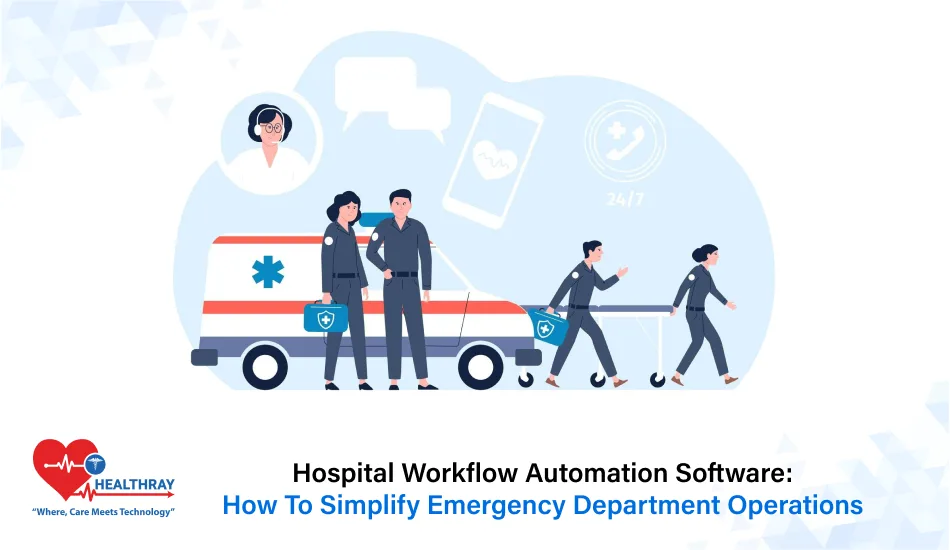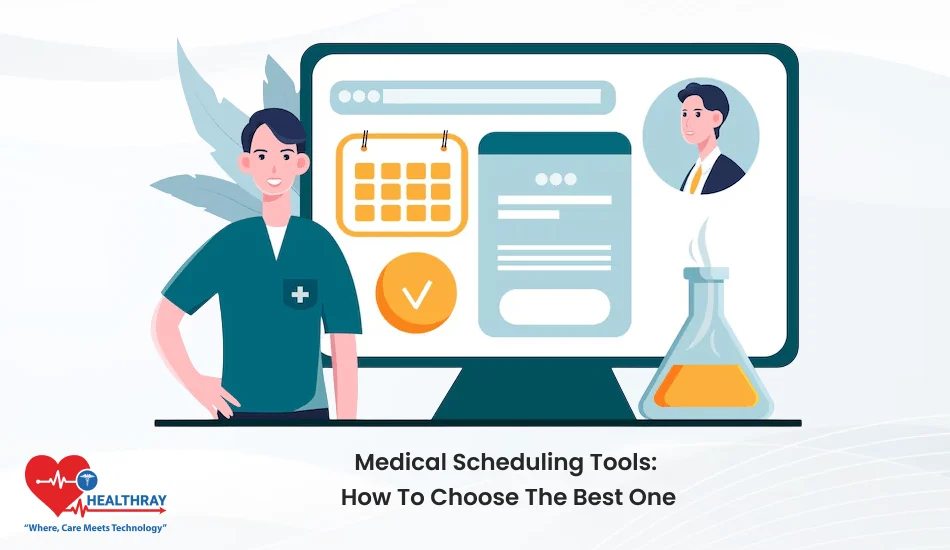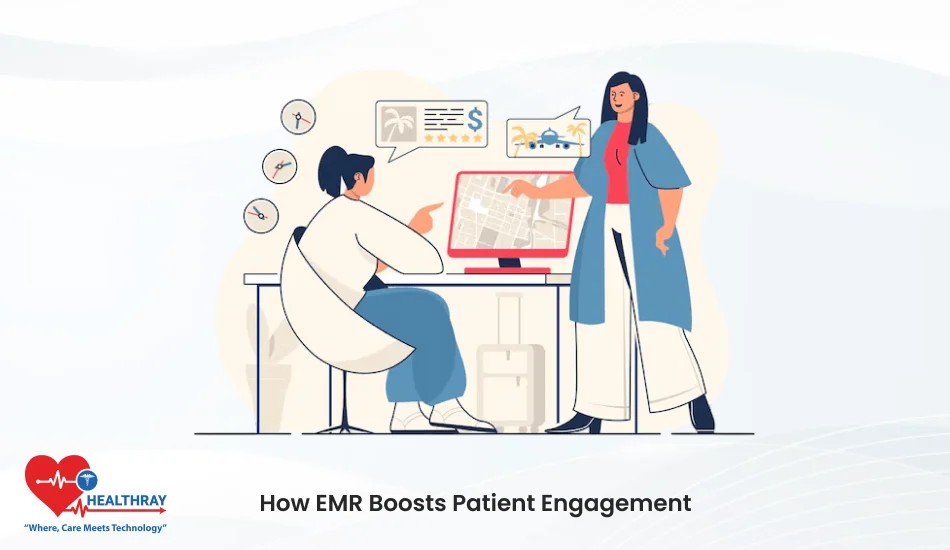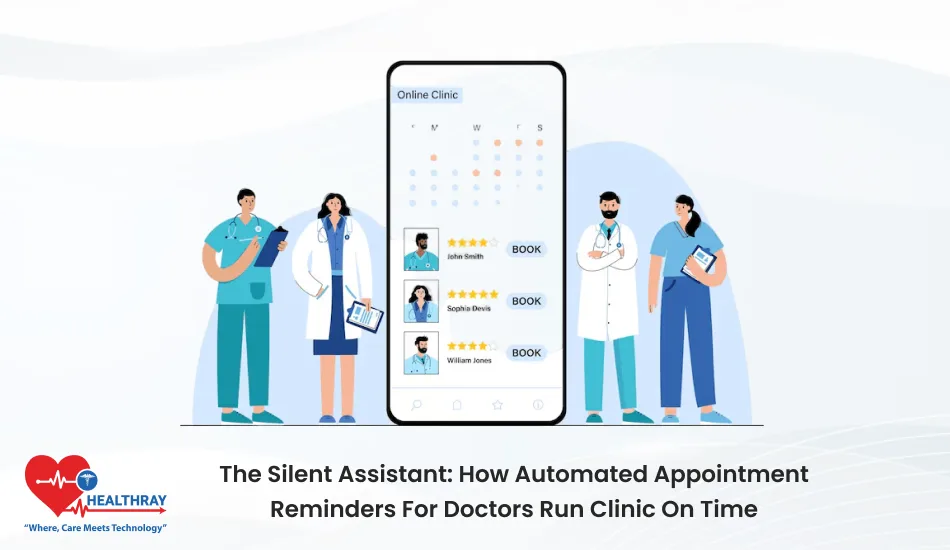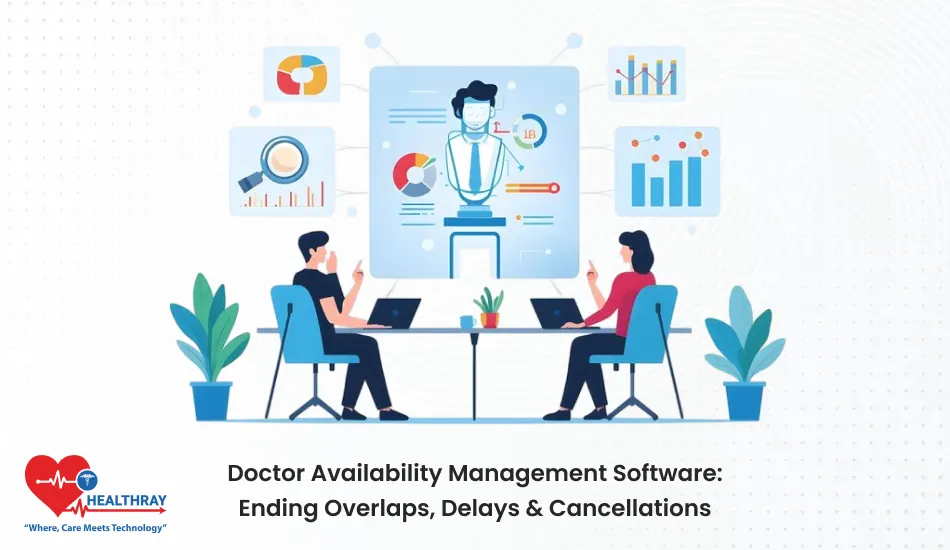Summary
In the current healthcare environment, hospitals must implement workflow automation to make their emergency rooms responsive, effective, and genuinely patient-centered. Hospital workflow automation software integrates clinical and administrative workflows, and with AI and automation it minimizes repetitive work, optimizes patient triage ,enhance communication and provides visibility for real-time patient flow and resource allocation. In this blog, I will discuss how workflow automation reduces manual errors of emergency departments. Also, I will also discuss how this software uses real-time data to prioritize patients in order to expedite the handling of critical cases.
Introduction
Emergency departments are the front line of the hospitals, where patients with dangerous and fatal conditions seek immediate treatment. Furthermore, it is a fast-paced and high-pressure environment where doctors, nurses, technicians aur admin staff need seamless coordination to deliver timely, efficient aur accurate patient care.
But emergency departments often face challenges such as unpredictable patient volume, overcrowding, delayed triage, communication gaps and administrative load that negatively impact care quality and increase the patients’ wait time. Furthermore, to tackle these challenges, healthcare practices are adopting hospital workflow automation software.
It is a transformative digital solution that streamlines the emergency department operations. Furthermore, Hospital management software implementation drastically reduces the ED overcrowding and long wait times, enhances patients’ safety and elevates the care quality of the patients. Hospital workflow automation software not only improves the care quality but also decreases the workload of clinicians. Overall, HMS improves the customer satisfaction level.
How Workflow Automation Reduces Operational difficulties in Emergency Departments
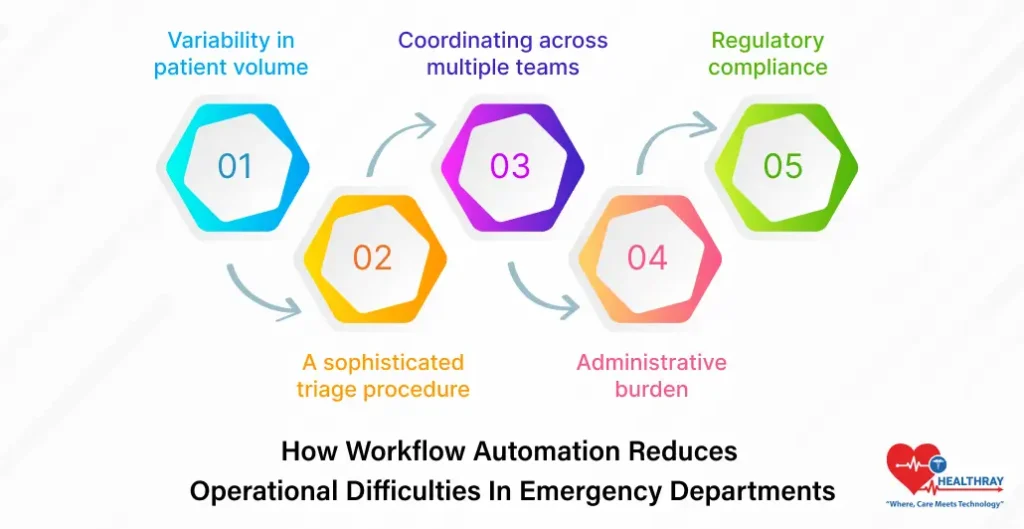
Let’s check out:
Variability in patient volume
As we know, patient flow in the hospitals is never predictable. Additionally, a surge in patients can occur at any time. Further, unpredictability, overcrowding, etc., are the main reasons for treatment delays.
Additionally, with AI -powered workflow automation tools, hospitals can effortlessly anticipate patient surges in advance, plan staffing carefully and manage resources seamlessly. Overall, it creates less chaos and provides faster response and smooth patient care.
A sophisticated triage procedure
In the emergency department, every second matters to patients. Furthermore, doctors and nurses need to access every patient’s condition and decide their priority. This is a most sophisticated task for doctors to decide each patient’s critical conditions. Further, if hospitals keep relying on old approaches, then it becomes really difficult to determine a patient’s critical symptoms in a short time. But the good part is that work automation software can easily determine patient history and vital symptoms.
Additionally, with real-time analysis, the system can automatically suggest which patient treatments need critical care and the doctor should attend to them first. Overall, it helps doctors make tangible decisions on critical patients and helps them give utmost prioritization.
Step towards digital era with our healthcare solution
Revamp your hospital facilities and embrace change for better healthcare management. Ease in managing and organizing large medical datasets leads to effective analysis. Seize the opportunity now!
Coordinating across multiple teams
Emergency department is a teamwork zone, where doctors, nurses, lab technicians, and admin staff work in the same rhythm. However, communication gaps and lack of updates sometimes create delays in work procedures. In the manual infrastructure, doctors needed to retrieve records by calling every department and share documents over email, etc. This procedure took a long time, was prone to mistakes, and required a lot of time to view the patients’ full profiles.
Furthermore, with hospital management software, all team members get connected to each other instantly. From lab results to patient status, all information gets recorded in the same software. Moreover, all departments can share, view and update the patient record immediately. Overall, hospital administration software makes the collaboration faster and less prone to errors and helps doctors put more focus on patients’ treatment.
Administrative burden
In the emergency department, along with clinical care, there are numerous challenges of paperwork and manual data entries. Furthermore, manual forms, billing, and authorization processes take considerable time from staff. In manual infrastructure, all healthcare records are disorganized, which means they are kept in different folders. Further, the admin department requires a lot of time to search any particular results of patients.
Also, results are not appropriate; some records are either wrong or not filled. Are you still relying on manual practices in 2025? Now, it’s the right time to upgrade your system. With hospital workflow automation software, you don’t need to make multiple phone calls and communicate with different departments manually to get complete information on patients. Overall, Hospital information systems automatically handle repetitive tasks from patient registration to discharge summary. Doctors just need to focus on core areas that are highly imperative in patients’ care journey.
Regulatory compliance
In the healthcare industry, compliance is not just a rule-following approach; instead, it’s the foundation for building patients’ trust. Furthermore, it is crucial to keep all the records of the emergency department accurate and confidential. In the traditional system, all staff members can access the records; there are no privacy rules, and even an intern can view patients’ records. Thus, there was a high chance of data leakage, as there were no fixed rules for any staff members.
Further, clinical management solutions can automatically encrypt data, manage access control smartly and maintain an audit trail in the system. By implementing automation, hospital management software companies don’t have to stress about hacking and data leakage. Now, only authorized persons with granted roles can access records. Overall, it minimizes compliance stress, provides high data security and elevates complete regulatory confidence in the system.
Integration with Hospital systems
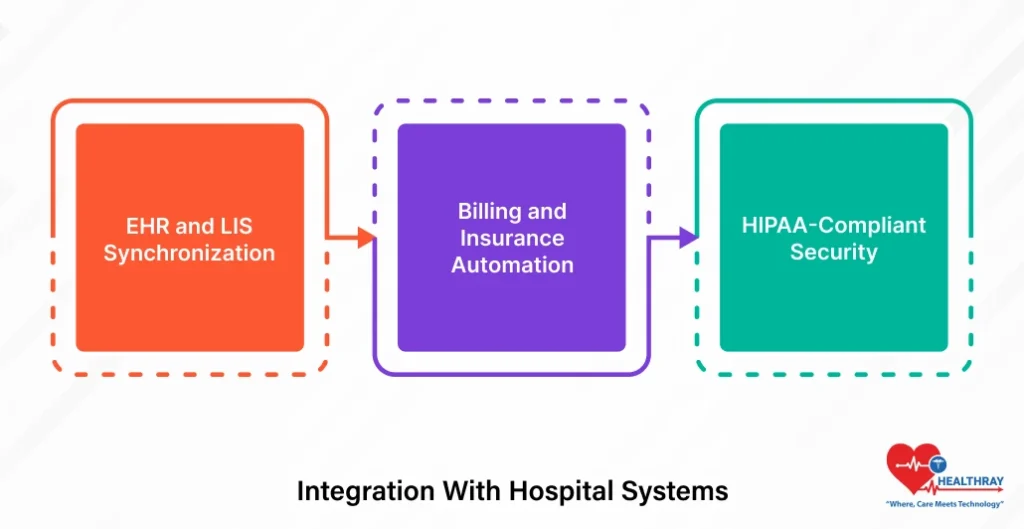
Let’s check out:
EHR and LIS Synchronization
Modern workflow automation software can easily integrate with electronic health records and laboratory management systems. Furthermore, this helps multiple medical systems to share a real-time synchronized system so that all departments can easily view and work on the same page. Overall, it minimizes error, provides faster updates and delivers smooth coordination across numerous departments.
Billing and Insurance Automation
Manual claims submissions and approvals are now old approaches of the healthcare system. Furthermore, with digital healthcare software, hospitals can achieve faster claim processing, accurate billing, and reduced denials. Overall, hospital information support solutions offer quicker reimbursement, less financial delay and better patient satisfaction.
HIPAA-Compliant Security
Automation not only expedites the process but also smartly handles security in the system. With HIPAA-compliant encryption and role-based access controls, patients’ data remain fully protected and only authorized members get access to check patients’ records. Overall, HMS provides high data security, full compliance and seamless collaboration without risks.
Modern Technologies Powering Emergency Department Automation
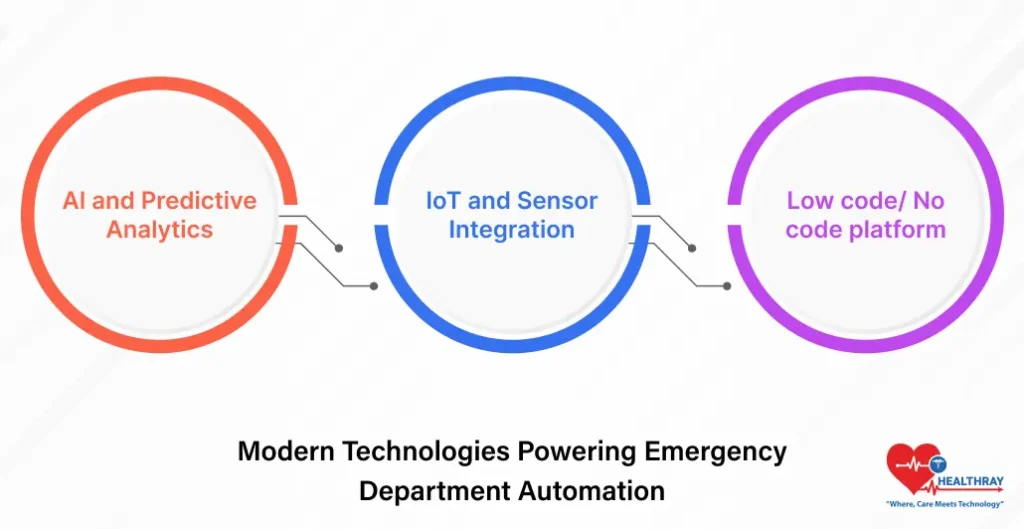
Let’s check out:
AI and Predictive Analytics
In 2025, artificial intelligence is not just limited to diagnosis. Furthermore, in emergency departments, AI predicts patient surges and evaluates case severity. Also, it provides real-time insights to doctors that guide them in treatment planning and decision-making. Overall, AI in healthcare and predictive analytics make the process more responsive, provide smarter care and also optimize resource allocation in each department carefully.
IoT and Sensor Integration
Smart IOT now provides live updates of every movement and resource. Further, IoT and sensor integration in hospital systems can automatically track patient flow, bed occupancy, and equipment status. It improves the system’s data accuracy and reduces the need for manual monitoring. Overall, IoT and sensor integration provide better visibility and instant alerts and make the operation smoother.
Low code/ No code platform
Hospital administrators are no longer required to know how to code. Further, a low-code/no-code HMS platform allows hospitals to build customized workflows in just a few minutes, according to their needs. In the traditional system, hospital workflows depend on IT departments to gather each and every piece of information.
But now hospitals do not need any heavy technical setups to automate their work. These no-code or low-code platforms require simple setup and hospitals can also customize features that they genuinely need in their operation. Overall, workflow automation software ensures zero dependency on IT teams and faster digital transformation.
Conclusion
Hospital workflow automation software is a powerful enabler for transforming emergency department operations. By integrating AI-driven triage, streamlined communication, automated administrative tasks, and real-time resource management, workflow automation tackles the unique challenges of emergency care directly. As a result, patients, physicians, and healthcare organizations all gain from quicker, safer, and more effective patient care.
I hope the blog post above gives you some helpful information about hospital workflow automation software and how it can help you reduce chaos, respond more quickly, and provide seamless patient care.
